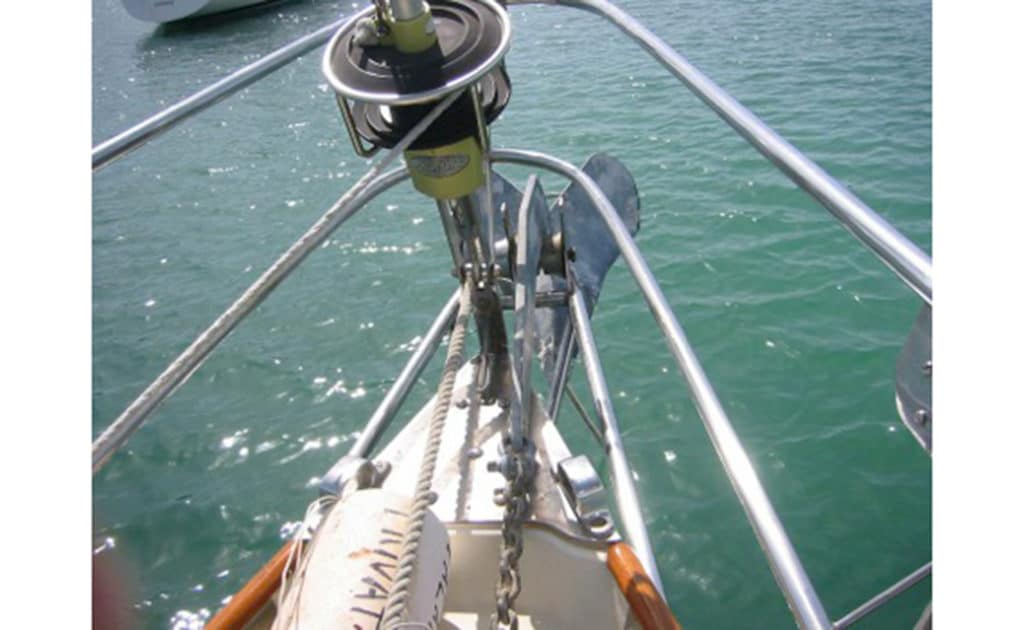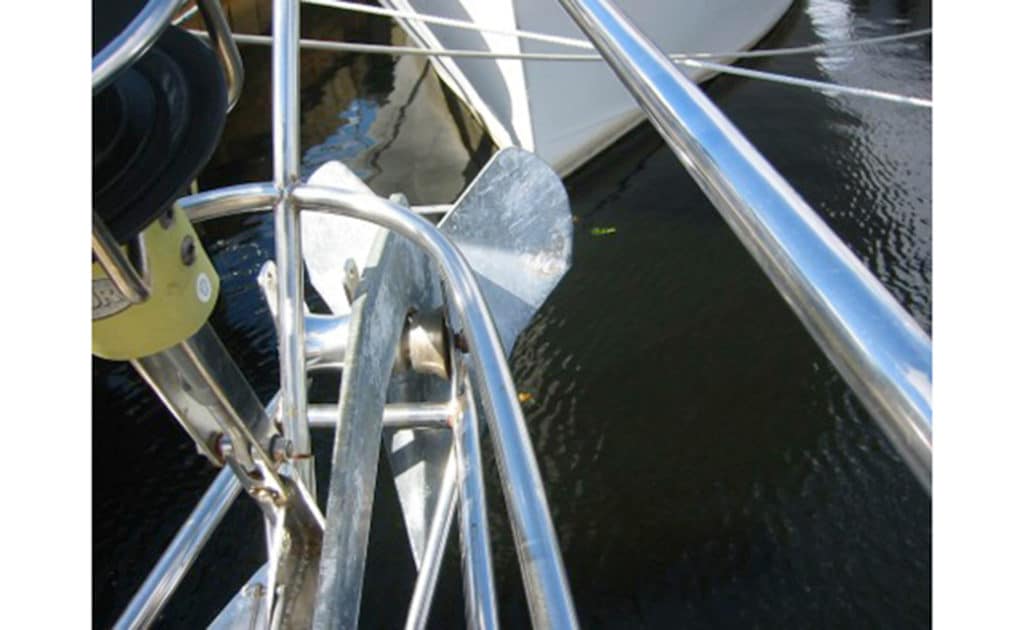A few days ago, I was looking at sailboats with friends, and I was noticing how many of these boats had the furling drums for the roller genoas positioned nearly at deck level with only a small toggle or jaw attached to the headstay chainplate. It always amazes me that I don’t see more cruising sailboats — with anchors to deploy from their bows — not take advantage of the 18-inch links plates that come with most furling systems.
Remember I am the wife of a sailboat rigger. Andy taught me so much about the rigging on our sailboat and on the boats he was working on every day. And one of the many ideas he thought was good for all cruising boats was to be able to attach the bottom of the roller-furling drum to the 18-inch link plates provided by most genoa furling systems.
Why? You are probably asking me now. Think about it. If the drum on your headstay is positioned almost at deck level, and your anchor stock is running past it when on the bow, isn’t it difficult for you to deploy and retrieve your anchor because the stock hits the roller drum? This isn’t always easy, as when deploying or retrieving your anchor you have to move that anchor stock to pass around the furling drum as it cannot slide under the drum.
Another good reason to have those link plates is it raises the tack of the genoa up higher than it would be with the drum down low to the deck. By raising the tack of the genoa, this allows much better visibility under the foot of the genoa when sailing. Also, it keeps the sail material around tack area from chafing on most pulpits. All good reasons to have the drum up higher than deck level.
There is one more important piece of rigging hardware that all headstays should have where the wire terminal goes into the chainplate. A double jaw toggle will allow your headstay sag to articulate on a pin with both fore and aft pressure and sideways pressure port and starboard. To ensure the longevity of your wire terminals, it is best to eliminate as much metal fatigue as possible. If the wire terminal attached to your headstay cannot rotate with sag that occurs when sailing, the terminal could eventually crack and break.
Go down the docks yourself. Look at all the headstay attachments. See how many have the link plates and double jaw toggles and how many do not and you will see what I am describing here. To make your life easier, safer and more fun, links plates and double jaw toggles should be an integral part of your headstay attachment to the bow chainplate.
Pam Wall spent more than 10 years as an outfitting specialist for West Marine, and she now provides her expertise as a cruising consultant and seminar presenter at boat shows around the country. Pam has cruised under sail extensively, including a circumnavigation with her family aboard their 39-foot sloop, Kandarik. Check out her website at pamwall.com.










